Vay is launching its teledriving car service, an Uber-like service where your car is driven by someone in a remote location.
You probably haven’t heard about teledriving before but you might want to get used to it. With Vay, you can order a car to come pick you up. A Vay driver sitting in a building with a bunch of screens in front of them will remotely drive the car to you. To spectators, this will look like a self-driving car coming to pick you up. But a human is fully in control of the car — from a distance.
Then you can get in the car and drive it around to where you want to go. When you are done, you hand it back over to the remote driver, who can drive the car to its next destination.
It’s a very interesting concept for a new kind of service — one that gives drivers more privacy than a taxi or an Uber. It can be more cost-effective as a per-minute rental service than other ridesharing solutions. And it could be safer than a self-driving car because a human is always in control of the car.
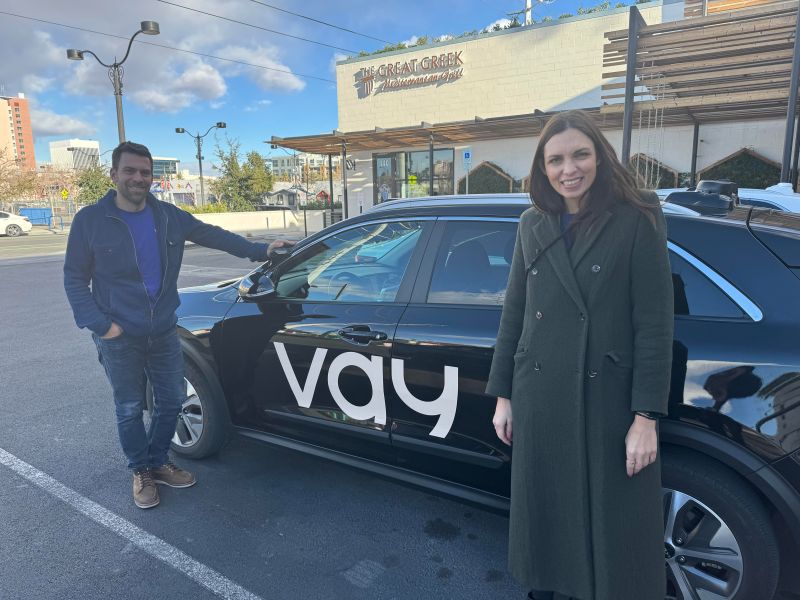
Anja Rechtsteiner of Vay.
It’s the brainchild of Berlin, Germany-based Vay, which invited me for a ride with the teledriven service that is launching commercially in Las Vegas now. The service aims to redefine urban mobility, offering door-to-door convenience while eliminating the challenges of parking.
Vay has been working on it for a while, as it has more than 150 people. Vay has raised $95 million to date. Thomas von der Ohe, Fabrizio Scelsi and Bogdan Djukic founded Vay back in 2018.
Vay’s teledriving technology presents an alternative approach to autonomous driving, emphasizing automotive-grade standards for safe operations on public streets.
Vay CEO Thomas von der Ohe, said in a statement, “After five years of developing our technology, we are bringing our vision to life in Las Vegas. Our convenient, affordable, and sustainable door-to-door mobility service aims to free cities from parked cars and make them more liveable and greener.”
Are there things that could go wrong? For sure. I can think of many. But the company is creating redundancy in its safety features, said Caleb Varner, U.S. general manager for Vay, in an interview with GamesBeat.
“Our founders believe that autonomous cars are really far in the future given all the edge cases that have to be solved,” said Varner.
Vay noted that drivers have screens that show what is around them and behind them, using the cameras that are attached to the car. They can get situational awareness by looking straight ahead at the screens, and that helps them operate in a safe manner, Vay said.
Teledrive service unveiled
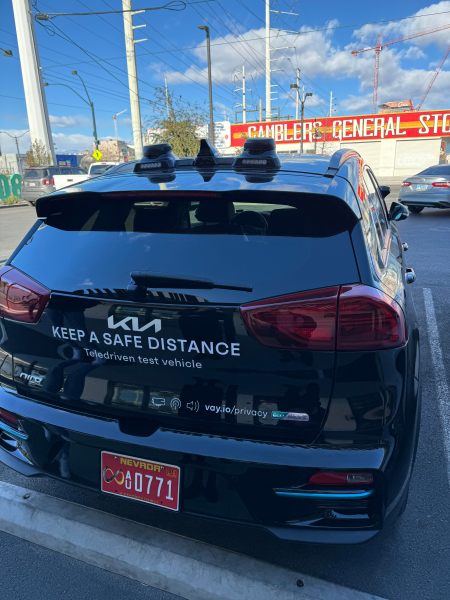
Following a successful early access phase, Vay has launched its teledriven service around the University of Nevada, Las Vegas (UNLV) and the Arts District in the city. Users can order an electric car through the Vay app, with a teledriver remotely bringing the vehicle to the user.
Once the user is in the car, they drive to their destination. Upon arrival, the teledriver takes over, either transporting the car to the next user or parking it. The app allows users to make stopovers during their journey, enhancing flexibility. Once the teledriver hands the car over to the user, the teledriver can no longer hear anything spoken in the car.
The per-minute rental model ensures users only pay for the time they use the car. Vay anticipates that its service will be more cost-effective than other mobility solutions, providing a compelling alternative for many users. The company is figuring out the rates for the longer term, but it will start at 30 cents per minute while driving and 3 cents a minute while you’re waiting.
An early access user shared their experience, stating, “The new Vay service is not only the least expensive option to get from A to B, but it also provides me with the freedom to travel at my own pace as I’m alone in the car.”
Teledriving technology and safety measures
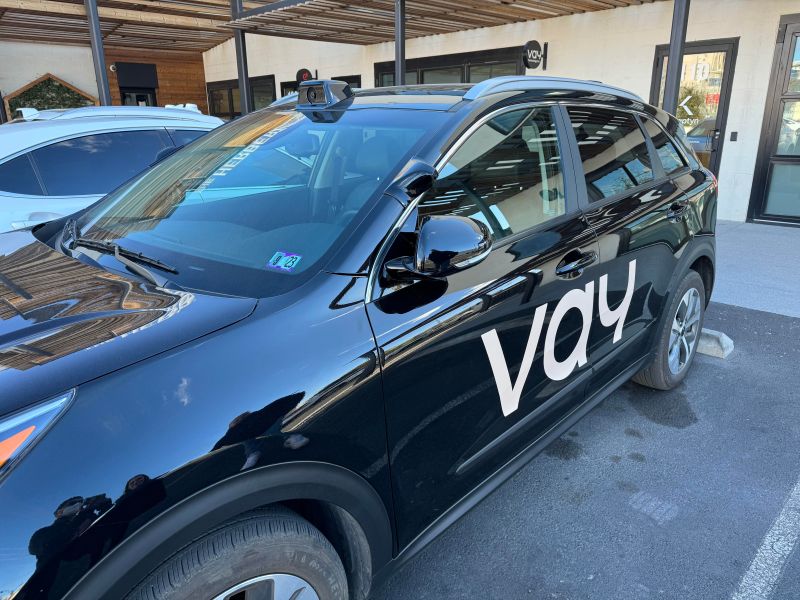
Vay’s teledriving technology enables a teledriver to operate a vehicle remotely, allowing the car to be driven without a person inside on public roads in Europe. Professionally trained teledrivers, stationed with a complete set of controls and screens, navigate the vehicle by replicating its surroundings through camera sensors. Road traffic sounds and warnings are transmitted to the teledriver’s station via microphones and headphones.
The Berlin-based startup prioritizes safety and security, adhering to key industry standards for vehicle safety, functional safety (ISO 26262), and cybersecurity (ISO 21434). Independent testing by TÜV Süd, a third-party entity, validated Vay’s technology. The Vay Teledrive Academy ensures rigorous training for teledrivers, empowering them with the skills and confidence to navigate public streets safely.
The service is currently available in the UNLV and Arts District area, with the app downloadable for users in the U.S.
The company’s investors include Kinnevik, Coatue, Eurazeo, Atomico, La Famiglia, Creandum, and notable individuals like former Alphabet CFO Patrick Pichette, former Audi CTO Peter Mertens, and Spotify CTO Gustav Söderström.
Going for a ride
When you order a car on the app, it will be driven to you remotely by a teledriver. No one will be in the car when it arrives. Once you get in, you can initiate a handoff. When the driving is turned over to the human user in the car, the light in the car turns to green, which means the in-person human can now engage with driving the car. I watched this handover happen as both drivers communicated.
“You basically have a mix between a taxi and a rental car. You have a door to door convenience and you don’t have to park the car as the teledriver can do that. It’s like an Uber delivered to you that you start driving,” said Anja Rechtsteiner, director of communications at Vay. “You have full privacy in the car. You can listen to your own music and drive at your own pace.”
I was able to experience what it was like to have a teledriver drive me around, although that is not the primary use case. Normally, I would just take control of the car and driver it myself under Vay’s normal conditions. But the team wanted me to see how the teledrivers work. My driver told me what she was doing each step of the way. She said she saw a stop sign or stop light, and saw pedestrians. It was a very verbal way of communicating to reassure the passenger what was happening with the remote driving.
While Vay could have the teledriver drive you around, that isn’t in the plan right now because that would require a human driver to be paid for the ride. That’s not more cost-effective than an Uber or a taxi, and so there isn’t much point to that for a startup business.
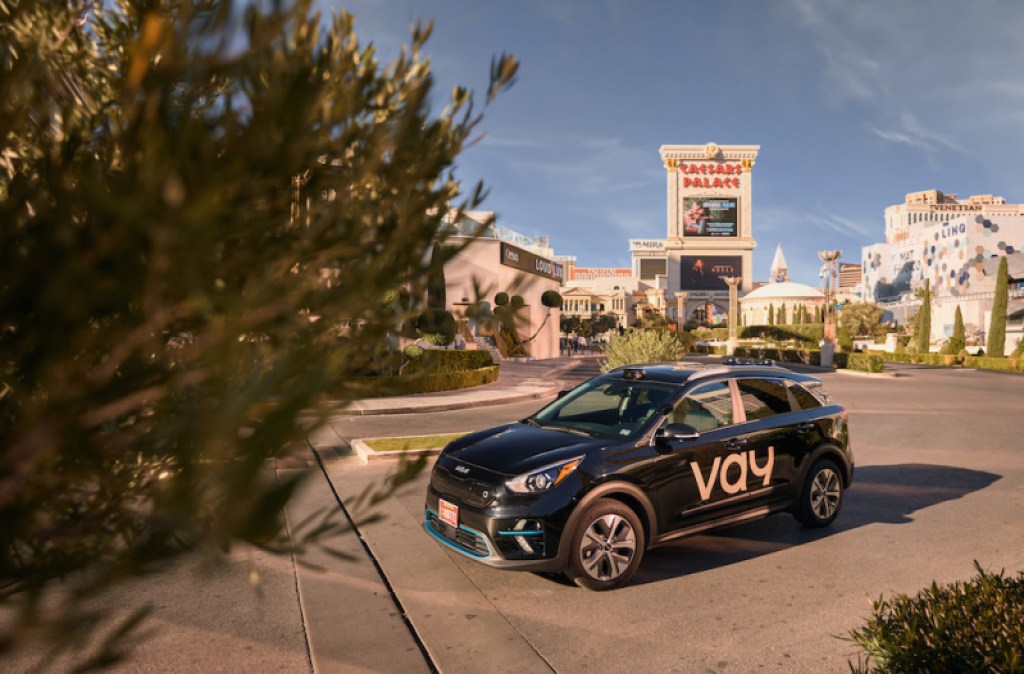
I had seen this kind of remote driving before. Phantom Auto announced it was doing this back in 2017. Both companies had the insight that it might be hard for passengers to trust self-driving cars. While services like Cruise and Waymo are getting underway, teledriving might be a good alternative. Phantom Auto is now focused on the warehouse forklift driving market.
One of the ideal use cases is to take a Vay to the grocery store. You can drive it there yourself and drive it back. Once you are done, the remote driver can park it or take it to another driver. You can transport people, packages, groceries and more, said Caleb Varner, U.S. general manager of Vay, in an interview with GamesBeat.
“We think the real value that we should be focused on today is to have you drive at a 20% to 50% discount on some of the next best alternatives at the same convenience,” Varner said.
The company has been testing in Las Vegas for about six months. The company is using Kia electric Niro SUVs for its fleet of Vay cars. The vehicles are off-the-shelf and it isn’t using one human driver to transport people. So it’s not regulated like a taxi or Uber.
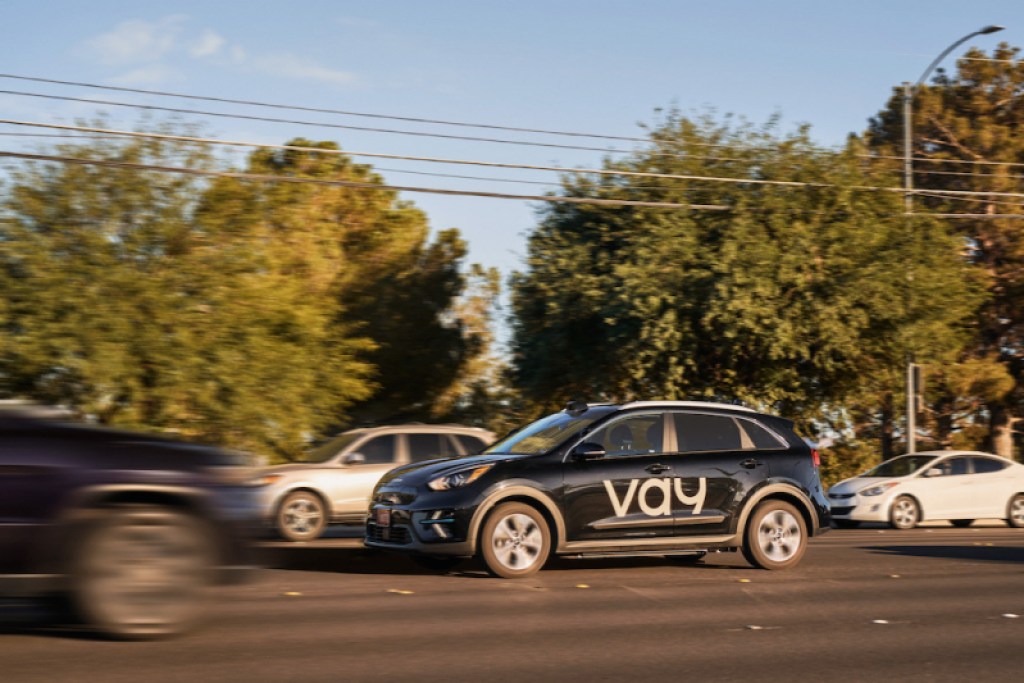
Vay is busy hiring and training drivers in the U.S., and it is buying cars and retrofitting them with cameras and other gear. The company is trying to get a permit to teledrive in Germany. But Las Vegas and Nevada are quick to approve experimental car services.
“We fall outside of the rideshare oversight, and we are effectively operating a vehicle that is getting delivered for you to drive,” Varner said. “That’s one of the big reasons we came to Nevada because the department of transportation here has been incredibly receptive.”
Right now there are travel limitations. You can’t take a car and drive it 100 miles away. You have to stay in the general neighborhood where the cars are available.
The company has two hubs in Las Vegas. One is in downtown and another is near the University of Nevada Las Vegas, as those are likely places where price-sensitive users live, or people who are like urban villagers.
GamesBeat’s creed when covering the game industry is “where passion meets business.” What does this mean? We want to tell you how the news matters to you — not just as a decision-maker at a game studio, but also as a fan of games. Whether you read our articles, listen to our podcasts, or watch our videos, GamesBeat will help you learn about the industry and enjoy engaging with it. Discover our Briefings.

